After a number of years with relatively modest rates for aircraft insurance — at least for the more easily insured aircraft and operations — rates have increased, even for experienced pilots with good records.
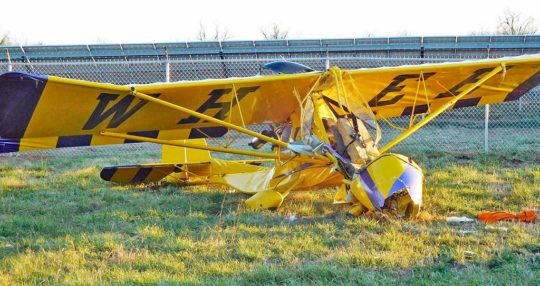 What’s Up!?
What’s Up!?
To learn more, we reached out to one of the most Light-Sport Aircraft, Sport Pilot kit aircraft-friendly insurance agencies, AIR, a fun abbreviation for Aviation Insurance Resources. My primary contact at AIR is Gregg Ellsworth, who was given an award in 2018 for being at every Midwest LSA Expo. He’s also a regular at most airshows and many sport pilots have come to know this man.
Short Answer:
Aircraft Insurance Market Fluctuates
Thanks to rapid increases in technology over the last decade, insurance became ever-more competitive. “Ten years ago a quote for a Cessna 172 may have taken a day or two to receive all available quotes back,” said AIR agent, Commercial Pilot, and CFI, Victoria Neuville. “Today most carriers can provide their quote within minutes!”
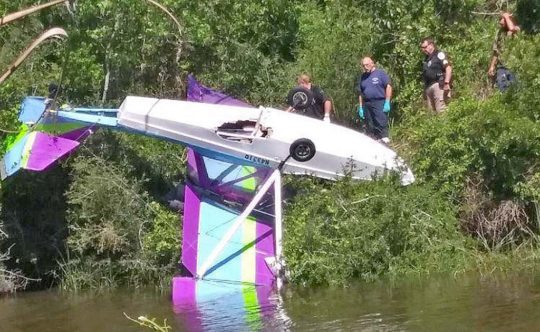 “With quoting becoming almost automated for many aircraft, insurance underwriters found themselves having to find new ways to stay competitive,” she added. “This meant broader policies, more flexible training requirements, and of course, a lower rate.”
“With quoting becoming almost automated for many aircraft, insurance underwriters found themselves having to find new ways to stay competitive,” she added. “This meant broader policies, more flexible training requirements, and of course, a lower rate.”
These changes lead insurance companies to what is called a “soft market.” Pilots and aviation business owners often benefited from flexible underwriting and record low premiums.
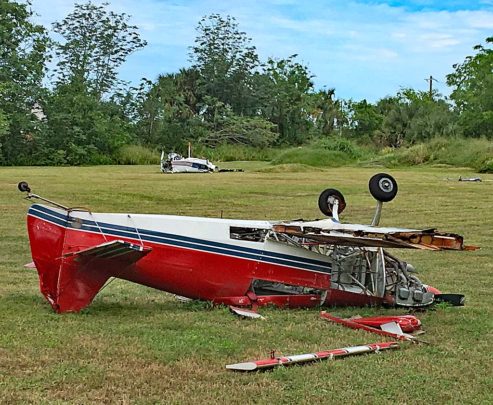
This site is near Embry Riddle Aeronautical University in Daytona Beach, Florida where students work with experts to investigate accidents.
“For the last decade, insurance premiums have been at an all-time low due to carrier competition,” confirmed Gregg.
“Aviation underwriters were all competing for the same group of business and the way to win the account was to provide the lowest rate,” he reported. “With these lower rates, however, the aviation industry didn’t experience any fewer losses, especially with the countless natural disasters experienced recently.” (Nearby photos reflect this concern.)
As with any business, Gregg explained, “rates had to increase in accordance with the outgoing costs.”
Additionally, Victoria indicated major changes are normally seen every two to five years. “After enjoying low rates for nearly ten years, the aircraft insurance market is once again hardening due to poor loss ratios,” she observed. “Stricter training requirements are being implemented to increase aviation safety.”
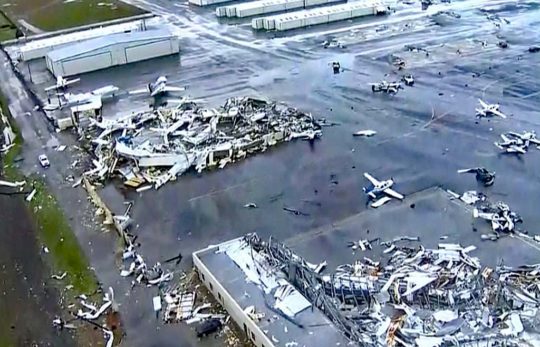
What Kind of Losses
Are Driving Rates?
While this website exclusively focuses on the light aircraft industry, insurance for all aircraft segments play a role in establishing rates. Compared to automobiles, for example, aviation is a small market.
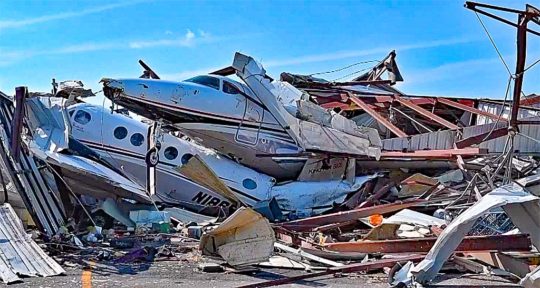
“Acts of God” can cause huge losses for aviation insurance and losses affect all aircraft segments.
It may be worthwhile to look at what drives loss ratios higher. According to AOPA writer Richard McSpadden, the four most common causes of non-catastrophic incidents that increases rates are:
- The most costly problem in general aviation aircraft is gear-up landings and gear collapses. This currently does not include any LSA other than amphibious seaplanes.
- Next is loss of directional control on the ground, including ground loops. McSpadden stated, “Although taildraggers are a strong contributor to overall insurance payouts in this category, the issue is not exclusive to taildraggers. [Pilots] lose control on the ground in nosewheel airplanes at a surprising rate.”
- Hard landings came in third in the list of non-catastrophic accidents. Notably, flight into terrain and in-flight breakups are expensive but are so infrequent that they do not affect rates as significantly.
- Ranking fourth in overall cost to insurers, but first in number of incidents, is prop strikes. Most pilots are aware that props are expensive and a prop strike means a costly examination by an aviation mechanic.
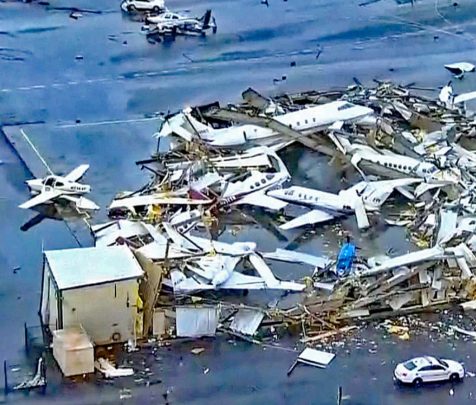
Tornadoes caused havoc at Tune airport, tossing aircraft onto great piles.
McSpadden summarized, “Dramatic fatal accidents and liability aren’t the cost [drivers] … contributing to rate hikes. It’s hull coverage.” My own LSA insurance reflects this. Liability insurance is relatively cheap; it is hull coverage that accounts for most of the annual premium I recently paid — 87% of the total for an aircraft worth about $80,000.
Gregg sells insurance for all aircraft types but he has become expert on Light-Sport Aircraft. He advises, “To mitigate the aviation insurance risk, many underwriters are now requiring stricter initial training if a pilot is new to the aircraft … from an instructor experienced in that specific make and model.” Learn more by reading his whole article focused on LSA insurance.
Aviation Insurance Resources is playing a long game. All AIR agents are pilots. They will shop all the major aviation insurance markets to find the best available rate for your insurance risk but they cannot conjure low rates out of thin air.
Here’s an interview with AIR’s Gregg Ellsworth at the Midwest LSA Expo (coming again September 10-12, 2020).


Yes, except I presume the pilot lived through the over turned landing since the plane is intact. Does anyone know for sure? It looks like the wheels were too small for a rough field landing for an over turned aircraft to occur on landing in a rough field. Has anyone made a comparison of wheel sizes for LSAs and rough field landings? And over turned landings? You all know the saying: there are those who have and those who will. Meaning we will all be making rough field landings sometime in the future. I have already made three rough (off) field landings over 50 years of flying in type certificated aircraft which tells me the wheels are large enough on type certificated aircraft; so believe I am done for this life time with rough field landings. And the corner cutting on LSAs is still a little too much to suit me; small wheels are a no, no!!! The over turned aircraft picture says it all!!!
I’m afraid the result of higher premiums is going to be lower volume. A lot of people will simply say it’s not worth it and not buy insurance. Those are generally going to be the people with the least chance of having a claim. At the end of the day the insurance companies may be paying 90% of the claims with the 70% of the premiums that they previously had. The other issue is that the insurance rates for training are so high and a lot of people will just quit doing training. That will also increase claims.
It’s easy to connect aviation with big $$$. And there are those that have it. But I think one big problem is that those in the industry don’t seem to understand that many, perhaps even the majority of pilots, can barely afford what they fly.
I would recommend constant recurring training — mandatory for a policyholder — paid for by the insurance company.
Just 20 minutes of training per month keep you up to date on emergency procedures, limitations and checklists
https://itunes.apple.com/app/keynote/id1367457386?mt=8
I’m looking at getting into aviation with a Sport Pilot certificate. I’ve looked at buying a used Challenger for around $10,000. Can you give me some examples of my insurance cost both liability and replacement. Thank you in advance. I have a clean driving record if that means anything.
Hi Jim: By all means, contact Aviation Insurance Resources and ask about rates. Good luck with your plans!